Japan 2018
Today we reluctantly set off from our Hakone onsen retreat to take the fast train to Kyoto. It was exciting to board the shinkansen again, especially travelling in first class. We reserved new seats at Odawara Station before we boarded.
Before long we saw the views of Mt Fuji that many Japanese and visitors long to see, from the bullet train. A little cloud but perfectly visible. We were happy. Mt Fuji, apart from being a symbol of Japan, is famous for its classic symmetrical slopes which can be viewed best from the Shinkansen train line.
Tony had been keen to visit the Toyota Automobile Museum in
Day Eight - En Route to Kyoto
September 13, 2018
|
Hakone, Nagoya, Kyoto
Today we reluctantly set off from our Hakone onsen retreat to take the fast train to Kyoto. It was exciting to board the shinkansen again, especially travelling in first class. We reserved new seats at Odawara Station before we boarded.
Before long we saw the views of Mt Fuji that many Japanese and visitors long to see, from the bullet train. A little cloud but perfectly visible. We were happy. Mt Fuji, apart from being a symbol of Japan, is famous for its classic symmetrical slopes which can be viewed best from the Shinkansen train line.
Tony had been keen to visit the Toyota Automobile Museum in

Nagoya. As it was on our way to Kyoto, we planned to make a tourist stop at its location, Nagakute. We managed to find our way via bus and train and it was well worth the hour long journey.
We followed the green manicured hedge pathways to the foyer of the museum which was situated on two levels of a large building. It featured cars built at the end of the 19th century and up until the middle of the 20th century. Beautifully uniformed young Japanese men and women were there to welcome visitors and guide them around the displays. The cars were mainly European and American, and featured other manufacturers such as Alfa Romeo and DeLorean Motor Company. On the walls was some impressive artwork and there were screens set up with video clips of the cars in action. The reserve collection included the 1922 Grand Prix Sunbeam.
We sat down and ordered coffee and cake at the cafe before we began our walking tour of the building. At the museum shop, Tony bought a miniature car - a blue 1962 Toyota Toyopet Crown.
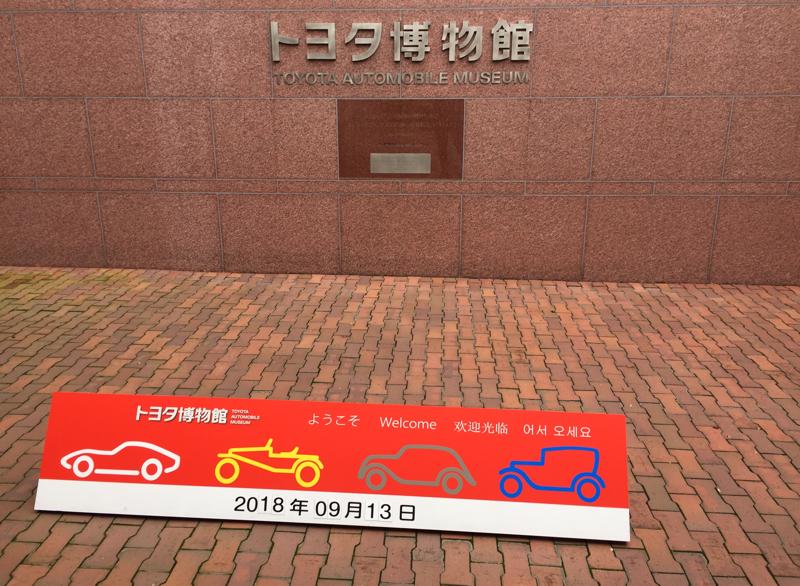

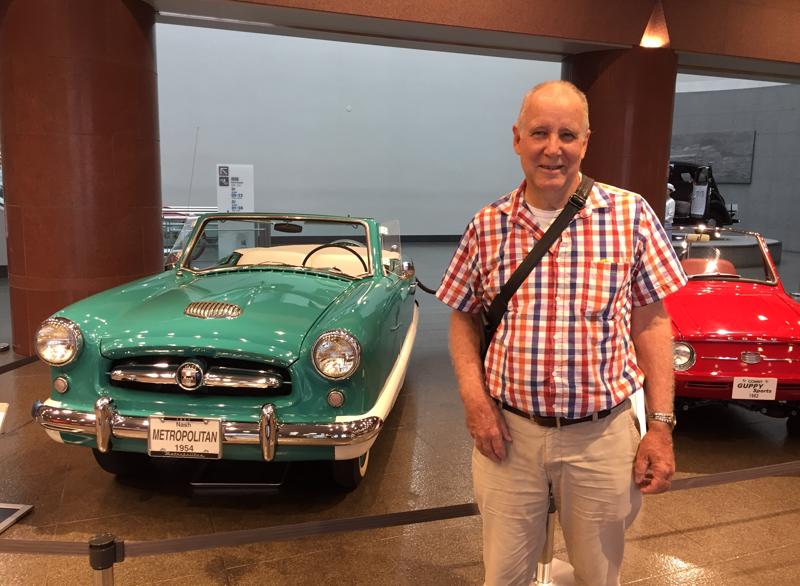

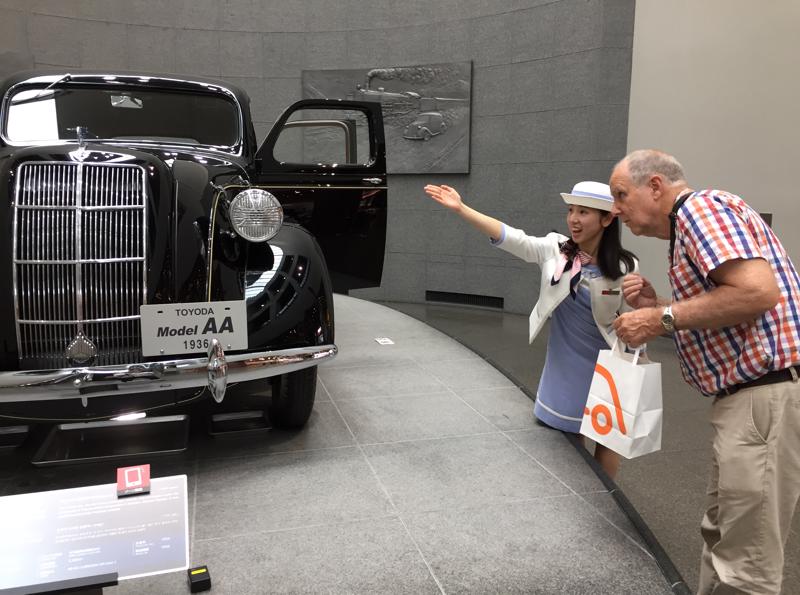
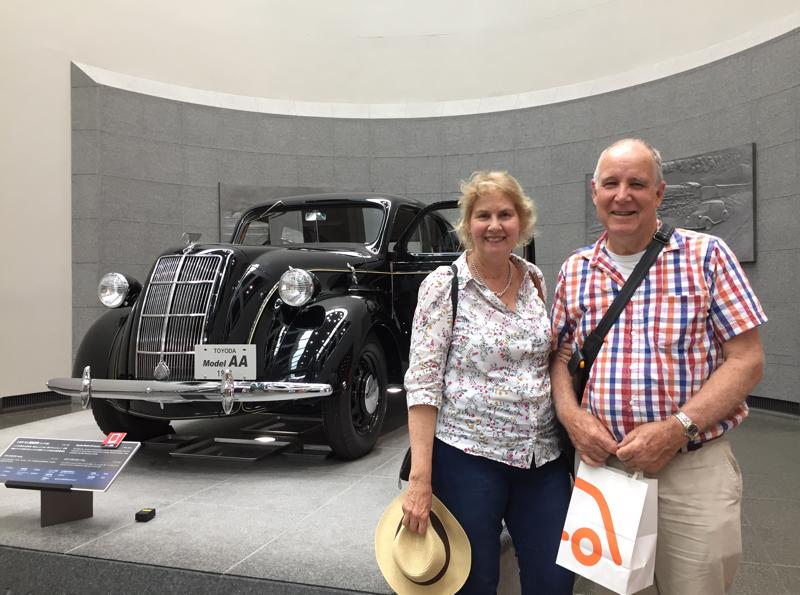
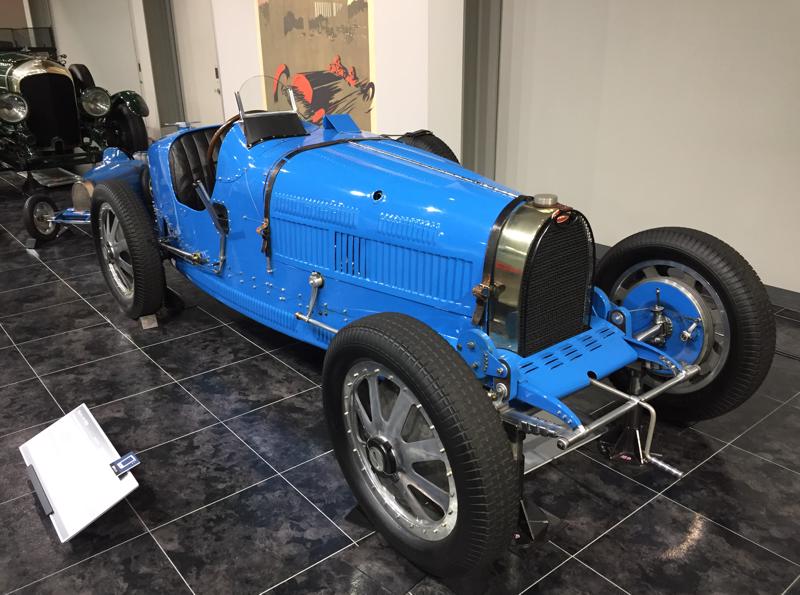

The Bugatti Type 35B is a racing car built in 1926. The blue colour indicates it belonged to a French team because back then each country had its own national racing colour. Green was assigned to England and red to Italy. This model was considered to be the fastest among French-made racing cars. The Gordon Bennett Cup was held annually from 1900 to 1905 in France and was a way of showcasing each country's automotive technology. From that event onwards, countries were assigned a racing colour. When a Japanese team participated for the first time in Formula One, their colour was a red mark on ivory white, similar to their flag.
The Alfa Romeo pictured was a 6C 1750 Gran Sport built in 1930 in Italy. A red sportscar, it boasts a light, super-charged six cylinder engine. It won many races including the Mille Miglia, a motorsport endurance race in Italy established in 1927.
Visitors were welcome to take a seat in an English built 1905 Swift. Tony was quick to avail himself of the opportunity. Lots of fun!
We looked at a black Ford Falcon built in the USA. The signage told us that this vehicle first appeared in 1960. It was a hit with consumers selling over 430,000 during its first year of sales. Two happy consumers of the Ford Falcon were Bob Mackie and Tony Dawson - two very discerning customers. The initial body styles were limited to just sedans and station wagons, but by 1963, coupes and convertibles were also added.

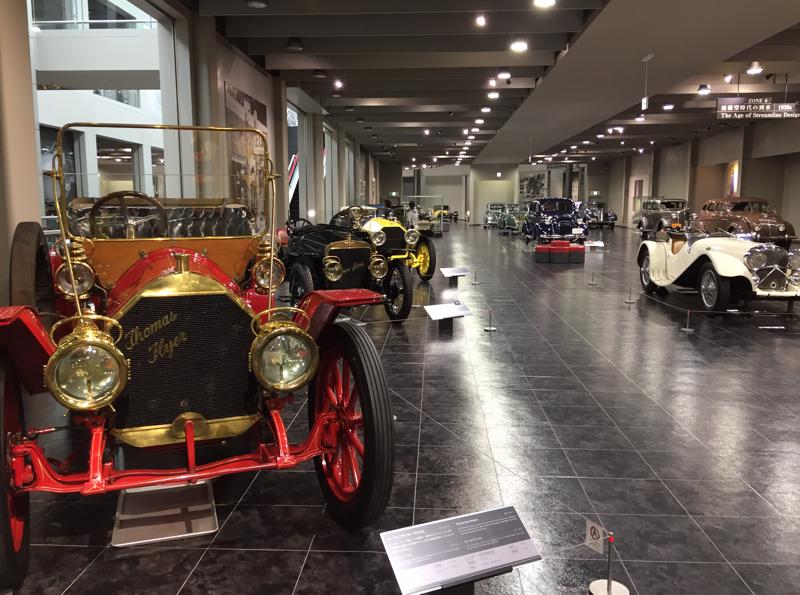
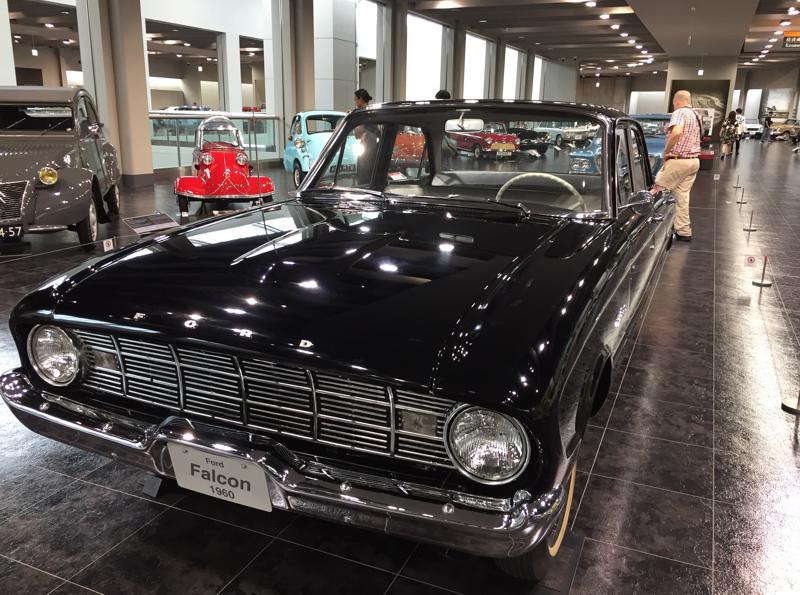
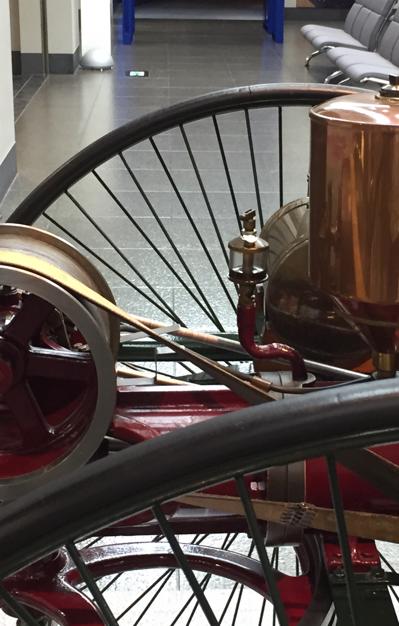
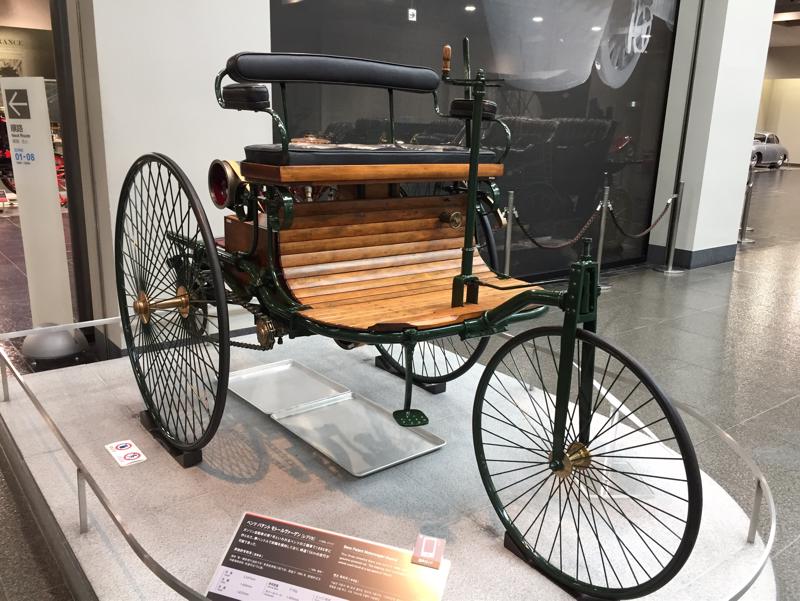
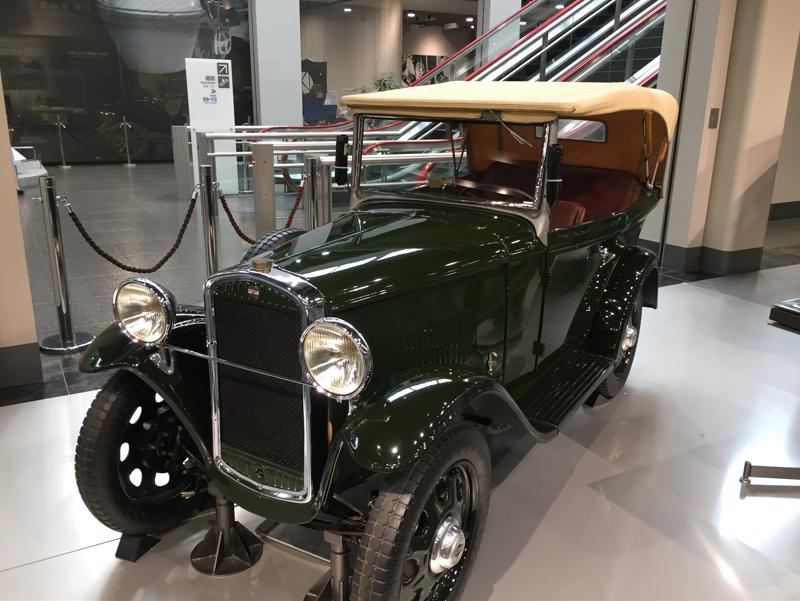
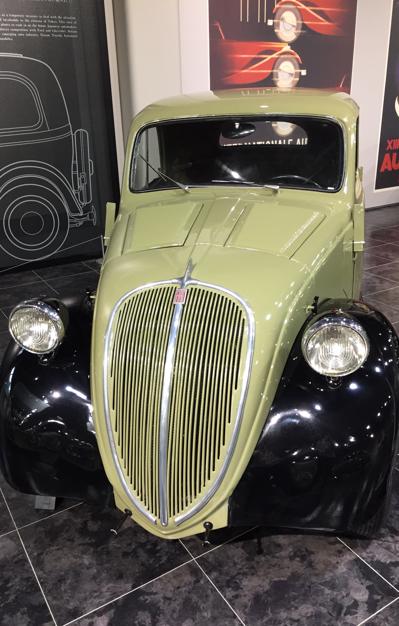
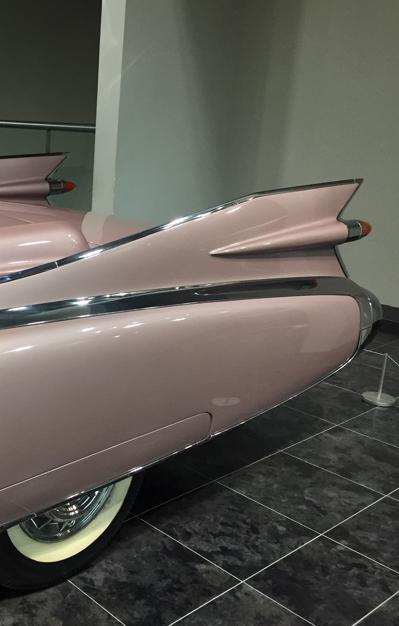
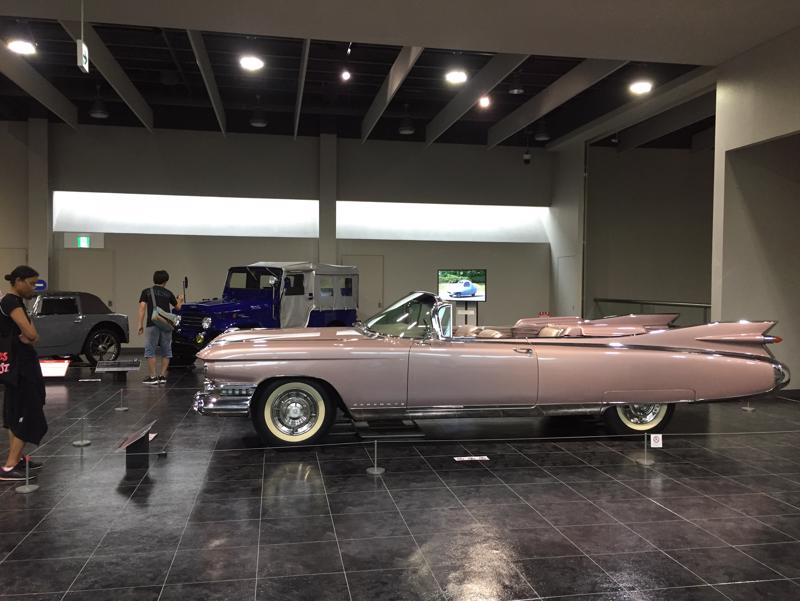
We loved the replica of the Benz Patent Motorwagen - a three-wheeled Benz built in 1886 in Germany. It looked like a three wheeler bike with a seat of varnished wood. This Benz is said to be the first gasoline-powered car. The steering stick controlled the front wheel and the vehicle could travel at a top speed of 15 kilometres per hour. Amazing for those times. This model was manufactured from 1886 until 1893.
The pale green car with black side trim is the Fiat 500 released in Italy in 1936. It was fondly nicknamed Topolino - house mouse - as it had a front which resembled the front teeth of a mouse and was such a compact little car it could vigorously dash around on the narrow streets in Italy. It reminded people of a house mouse. The Fiat 500 was quite expensive in those days and the middle class could not easily afford one. It was equipped with the performance capacity of a large car. Later, a 2-seater, compact car was developed which was more affordable.
We read that Datsun was once famous as a compact car brand under Nissan Motor. We found this dark green one built in 1932 before the proper establishment of Nissan Motor. It was one of the 150 models manufactured in that year - Datsun Model 11 Phaeton.
The pink Cadillac - Cadillac Eldorado Biarritz - was manufactured in the States in 1959. The Cadillac was a luxury vehicle and became a symbol of the USA. The tail fins were first adopted by Cadillac on the 1948 model but by the 1960's they had disappeared.

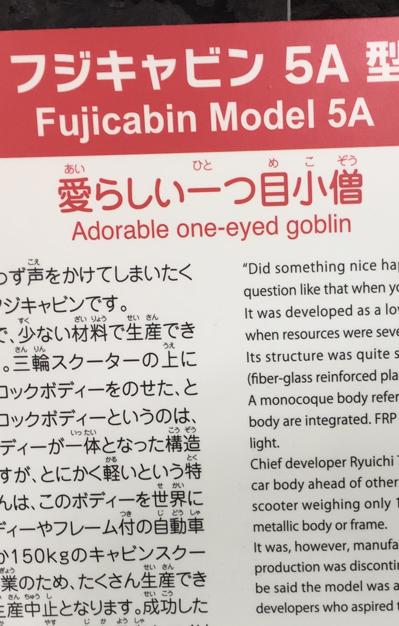
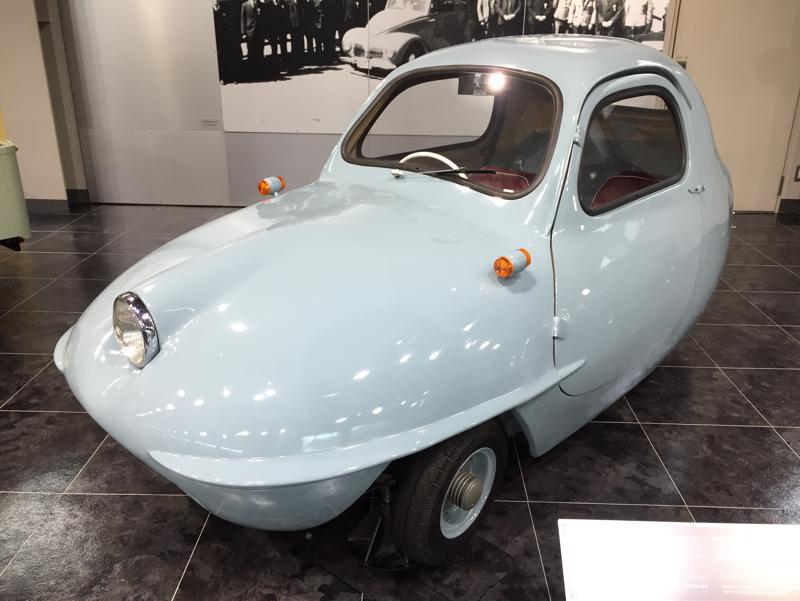
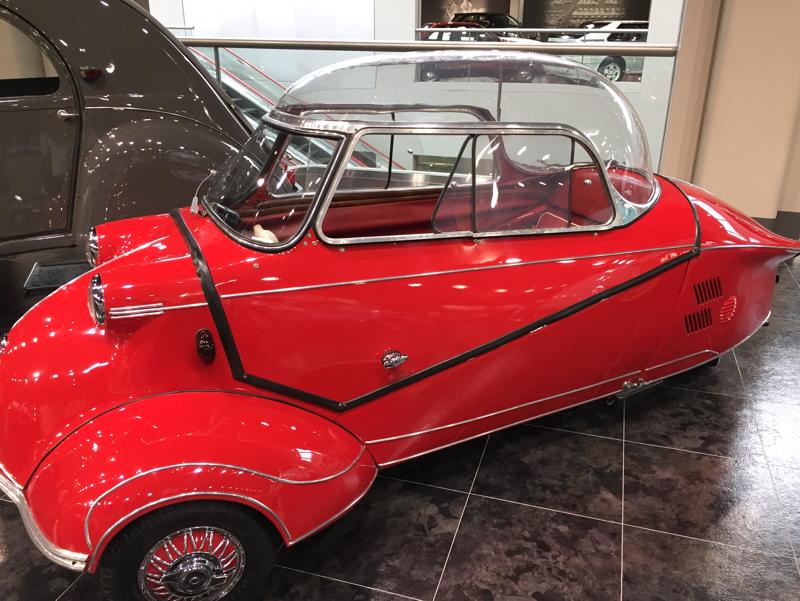
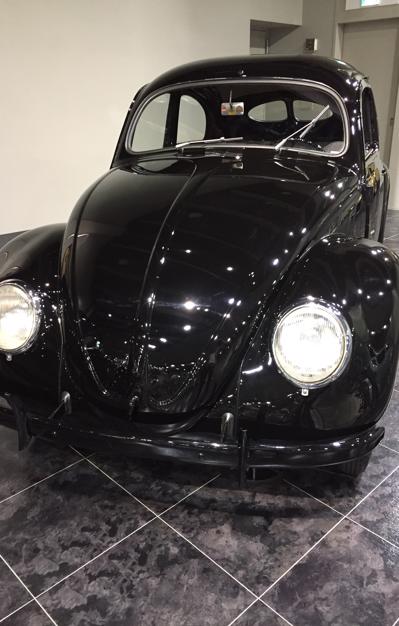

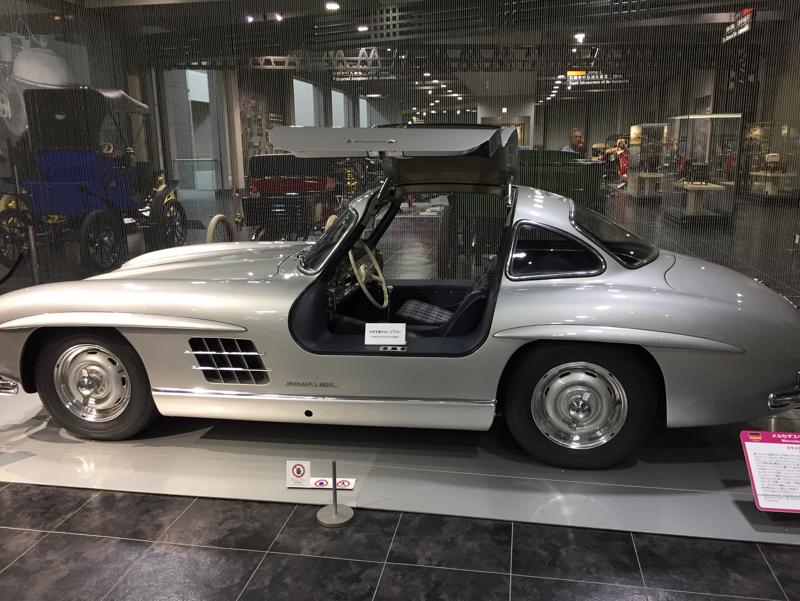
One of the cutest cars we saw was a Japanese one - the Fujicabin Model 5A - a light blue one called an 'Adorable one-eyed goblin'. It was developed as a low-price vehicle after the war and was literally a three-wheeled scooter with a light fiberglass body. It weighed only 150 kilograms. Only about a hundred of them were manufactured.
Another cute car which looked like an airplane was the red Messerschmitt KR200, manufactured in Germany in 1955 by an aircraft manufacturer and extensively used on the roads. It was a handy means of transport for two people,like a moped, and was called a 'bubble car'.
We saw a little black car we knew immediately - the Volkswagen. It was originally called the KdF Wagen and was manufactured in Germany in 1938. Hitler attempted to encourage car ownership and sent out a slogan: 'Save five marks a week and drive your own car'. Many people started saving but then the war came. In 1945 this car was officially named Volkswagen.
We loved the look of the silver Mercedes-Benz 300 SL Coupe - a sportscar with gull wings. It was manufactured in Germany in 1955 and modelled after a racing car. It was impossible to install an ordinary door as the car frame had metal pipes running through it, so the door opened upwards. Sports cars were a trend in the USA in the 1950's and this was was built to be exported there.
We left the museum on Cloud 9 perhaps, as we left our backpacks in the lockers and halfway down the road remembered! Oh.....

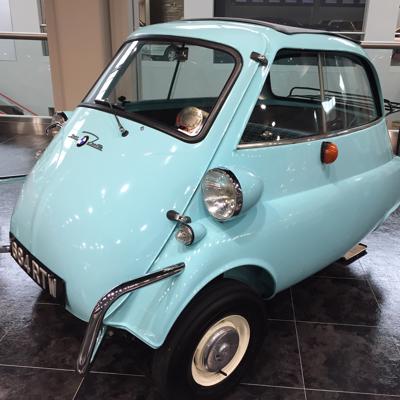
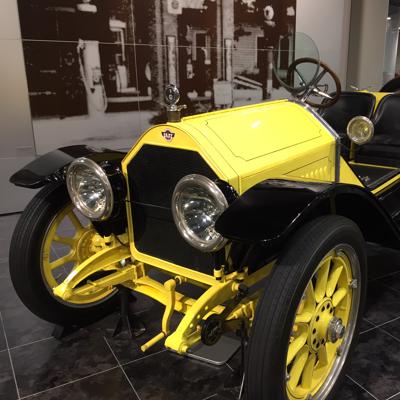
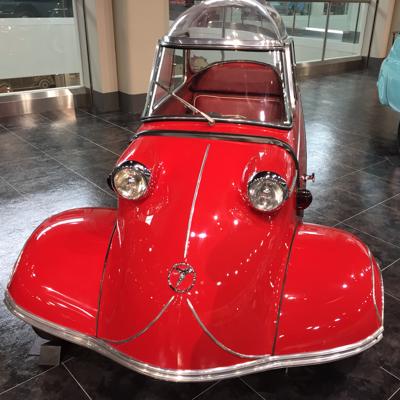
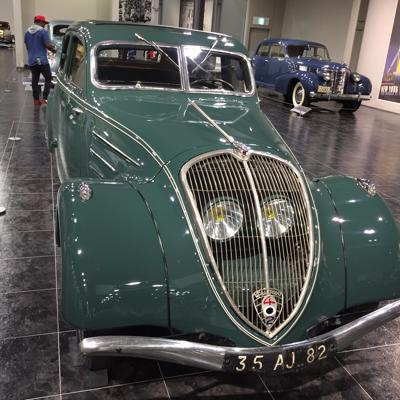

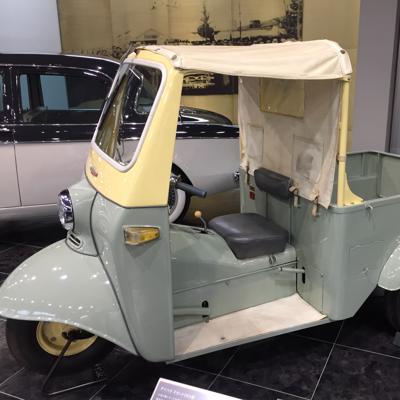
1.
Day Two - Into Tokyo
2.
Day Three - Imperial Palace
3.
Day Four - Meiji Shrine
4.
Day Five - Yoyogi
5.
Day Six - To Hakone
6.
Day Seven - Mt Fuji Sightseeing
7.
Day Eight - En Route to Kyoto
8.
Day Nine - Kyoto Sightseeing
9.
Day Ten - To Nagoya
10.
Day Eleven - Inuyama Sightseeing
11.
From Day 12 - To the Cruise Ship
12.
From Day 18 - From Korea
13.
From Day 23 - To Sakhalin
14.
From Day 25 - To Otaru
15.
From Day 29 - Farewells
Share your travel adventures like this!
Create your own travel blog in one step
Share with friends and family to follow your journey
Easy set up, no technical knowledge needed and unlimited storage!